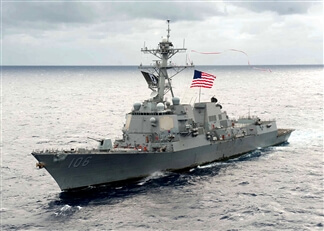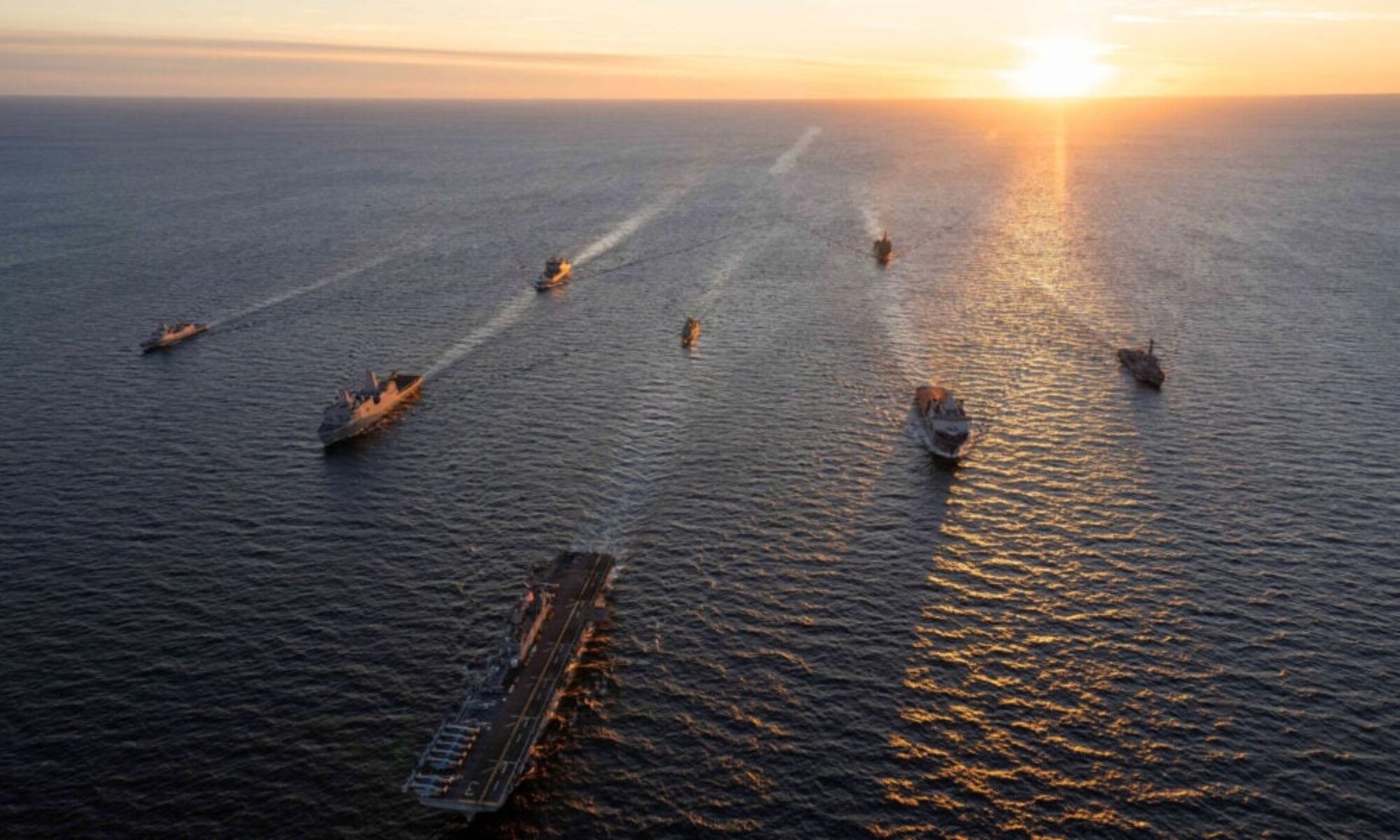
Introduction
On Friday, U.S. Navy warships operating in the Red Sea successfully intercepted a barrage of missiles and drones launched by the Iranian-backed Houthi rebels. Described by the Pentagon as a “complex attack,” this incident underscores the volatility of the region and highlights the Navy’s crucial role in maintaining security and freedom of navigation. Despite the Houthis’ claims of success, U.S. Navy officials confirmed that no ships were damaged, and all personnel remained safe.
The Attack: A Coordinated Assault in a Volatile Region
The Houthis, operating from Yemen, launched what they described as an attack involving nearly two dozen ballistic missiles, cruise missiles, and drones targeting three U.S. Navy destroyers. Despite their claims of scoring direct hits, Deputy Pentagon Spokesperson Sabrina Singh confirmed that all missiles and drones were either intercepted, shot down, or failed to hit their targets. This marks one of the most significant escalations in recent months and showcases the complexity and danger U.S. forces face in the region.
“We did what we had to do to protect our forces, and at the end of the day, no ship was hit, no damage, and no injuries to our personnel,” Singh stated.
U.S. Navy’s Response and Presence in the Red Sea
The U.S. Navy has maintained a strong presence in the Red Sea, a strategic waterway connecting the Mediterranean Sea to the Indian Ocean via the Suez Canal and the Gulf of Aden. This region is vital for global trade and has witnessed increased hostilities, particularly from the Houthis, in recent years.
Currently, five U.S. warships, including the destroyers USS Frank E. Petersen, USS Michael Murphy, USS Spruance, USS Stockdale, and the littoral combat ship USS Indianapolis, are patrolling the Red Sea. These warships, equipped with advanced missile defense systems, have effectively neutralized multiple threats over the years, ensuring the safe passage of commercial vessels and maintaining regional stability.
Why This Matters: The Strategic Importance of the Red Sea
The Red Sea serves as a critical corridor for international trade, with over 10% of global shipping passing through the Bab al-Mandeb Strait, the southern gateway connecting the Red Sea to the Gulf of Aden and the Arabian Sea. Any disruption in this waterway could have far-reaching consequences for the global economy.
The increased presence of U.S. warships in the region serves as a deterrent against potential threats and demonstrates America’s commitment to protecting vital shipping lanes. It also reflects the broader strategy of ensuring maritime security in the face of growing threats from non-state actors like the Houthis and state-backed entities such as Iran.
Assessing the Threat: The Houthis’ Growing Capabilities
While the Houthis’ claims of hitting U.S. warships are unsubstantiated, their ability to launch coordinated attacks involving missiles and drones demonstrates a growing level of sophistication. The support from Iran has undoubtedly bolstered their capabilities, posing a significant challenge to maritime security in the region.
U.S. forces have repeatedly demonstrated their ability to adapt and respond to these threats, but the evolving nature of Houthi tactics indicates that the situation requires constant vigilance.
Looking Ahead: Implications for the U.S. Navy and the Region
The recent attack serves as a reminder of the ongoing tensions in the Middle East and the importance of maintaining a robust naval presence. The U.S. Navy’s ability to effectively counter such “complex attacks” highlights the readiness and resilience of American forces, but it also underscores the need for continued investment in advanced defensive technologies and strategies.
As the situation evolves, it’s clear that the U.S. Navy will remain on the front lines, ensuring that vital trade routes remain open and that American interests and allies are protected.
Conclusion
Friday’s incident in the Red Sea is a testament to the U.S. Navy’s preparedness and ability to respond to emerging threats in real time. While the Houthis continue to pose challenges to maritime security, the presence of highly trained and well-equipped U.S. forces ensures that provocations like this are met with decisive action. For now, the waters of the Red Sea remain open, thanks to the vigilance and dedication of our Navy personnel.
As we reflect on the challenges faced in the Red Sea, let us not forget the sailors who stand watch, ready to defend at a moment’s notice. Their courage and professionalism in the face of danger embody the very best of what it means to serve. We owe them not just our thanks, but our unwavering support as they continue to protect our freedoms and safeguard vital maritime routes. To the crews of the USS Frank E. Petersen, USS Michael Murphy, USS Spruance, USS Stockdale, and USS Indianapolis – we salute you. Your service does not go unnoticed, and we are grateful for all you do.

